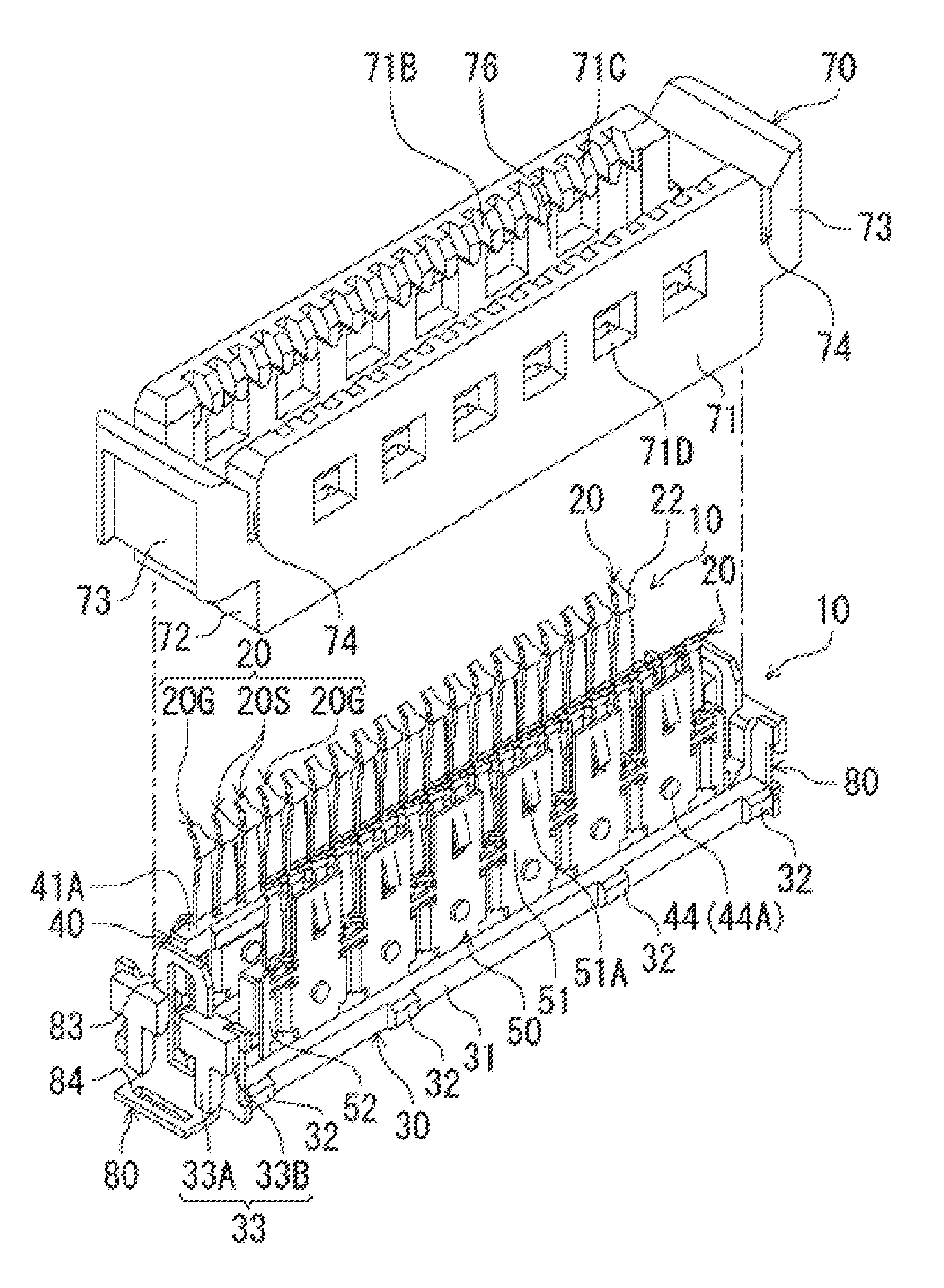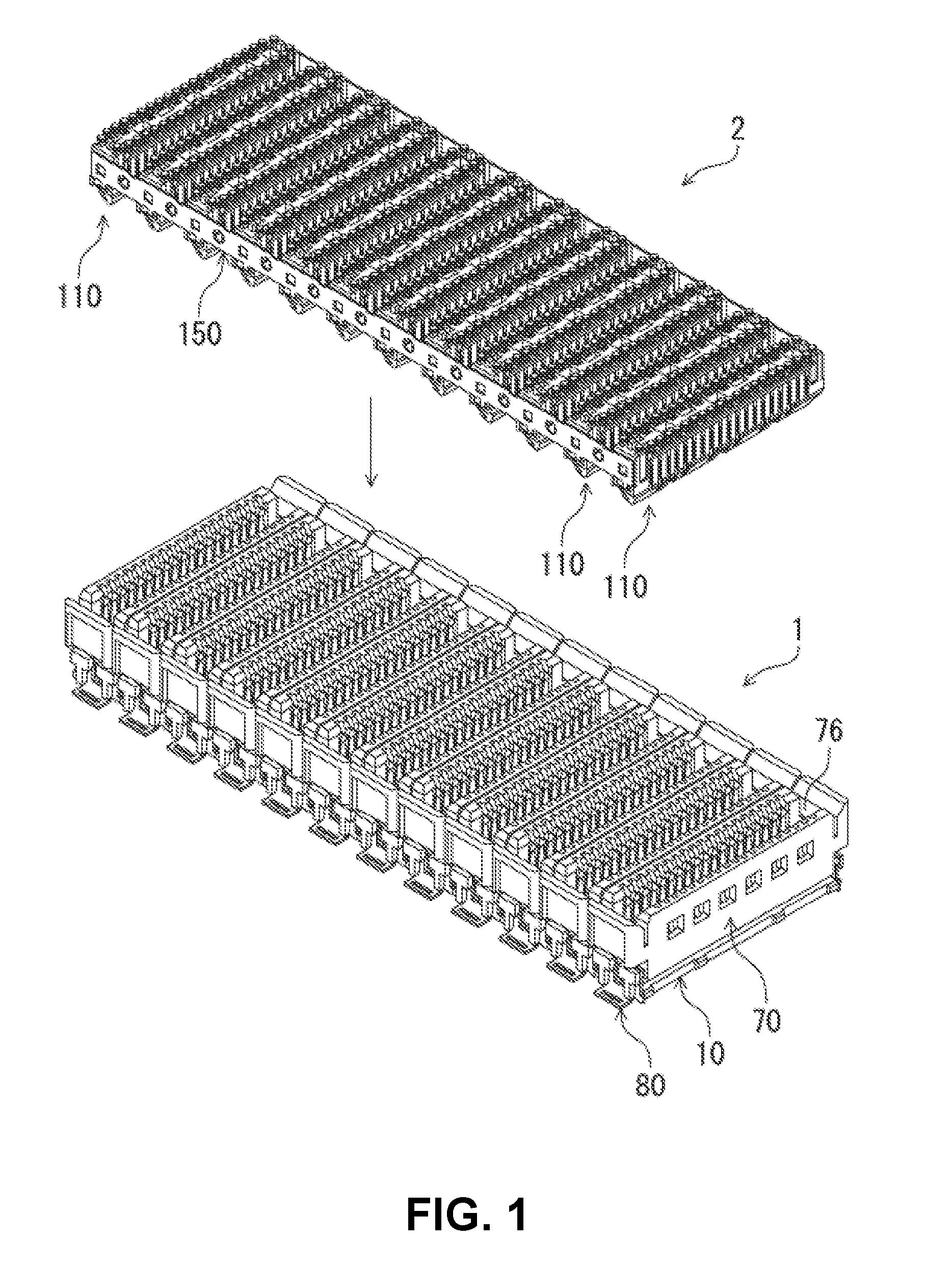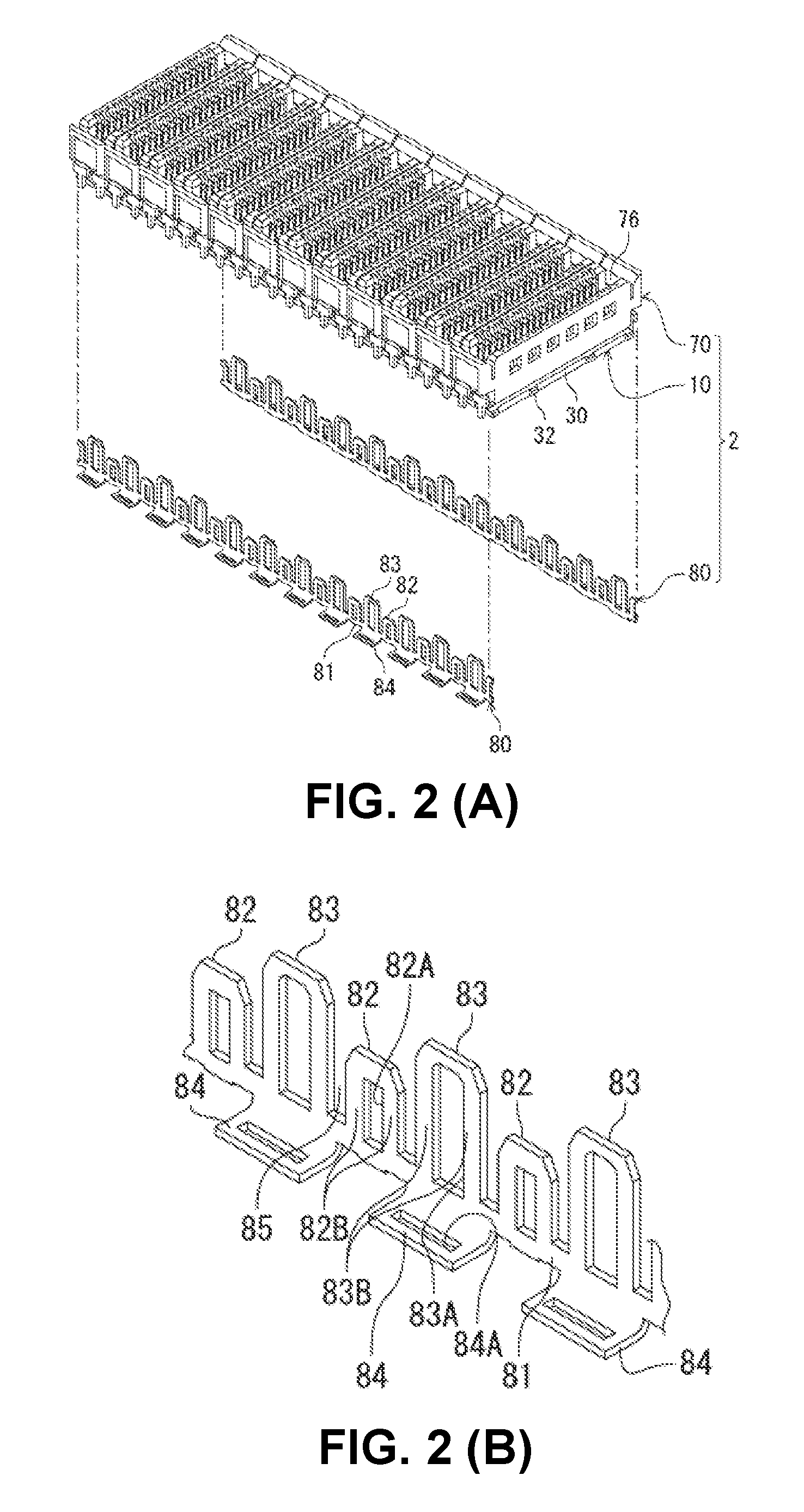Electrical connector
a technology of electrical connectors and connectors, applied in the direction of coupling devices, two-part coupling devices, electrical apparatus, etc., can solve the problems of complex terminal shapes, less flexibility in design, and complex terminal shapes, and achieve the effect of not making the shapes of the terminals complicated, large floating, and large misalignment between the connectors
- Summary
- Abstract
- Description
- Claims
- Application Information
AI Technical Summary
Benefits of technology
Problems solved by technology
Method used
Image
Examples
Embodiment Construction
[0044]Hereunder, an embodiment of the present invention will be described with reference to the accompanying drawings.
[0045]FIG. 1 is a perspective view of an electrical connector assembled component according to an embodiment of the invention, which shows a state before fitting connectors; According to the embodiment, the connector assembled component includes a receptacle connector 1 and a plug connector 2, which are fit to connect each other. The receptacle connector 1 and the plug connector 2 are electrical connectors for circuit boards, which are to be disposed on mounting surfaces of different circuit boards. The receptacle connector 1 and the plug connector 2 are fit to connect each other, having a direction perpendicular to the mounting surfaces of the respective circuit boards (an up-and-down direction in FIG. 1) as an insertion / removal direction thereof.
[0046]In the description of this embodiment below, a “connector fitting direction” is set as a direction of fitting the p...
PUM
 Login to View More
Login to View More Abstract
Description
Claims
Application Information
 Login to View More
Login to View More - R&D
- Intellectual Property
- Life Sciences
- Materials
- Tech Scout
- Unparalleled Data Quality
- Higher Quality Content
- 60% Fewer Hallucinations
Browse by: Latest US Patents, China's latest patents, Technical Efficacy Thesaurus, Application Domain, Technology Topic, Popular Technical Reports.
© 2025 PatSnap. All rights reserved.Legal|Privacy policy|Modern Slavery Act Transparency Statement|Sitemap|About US| Contact US: help@patsnap.com



